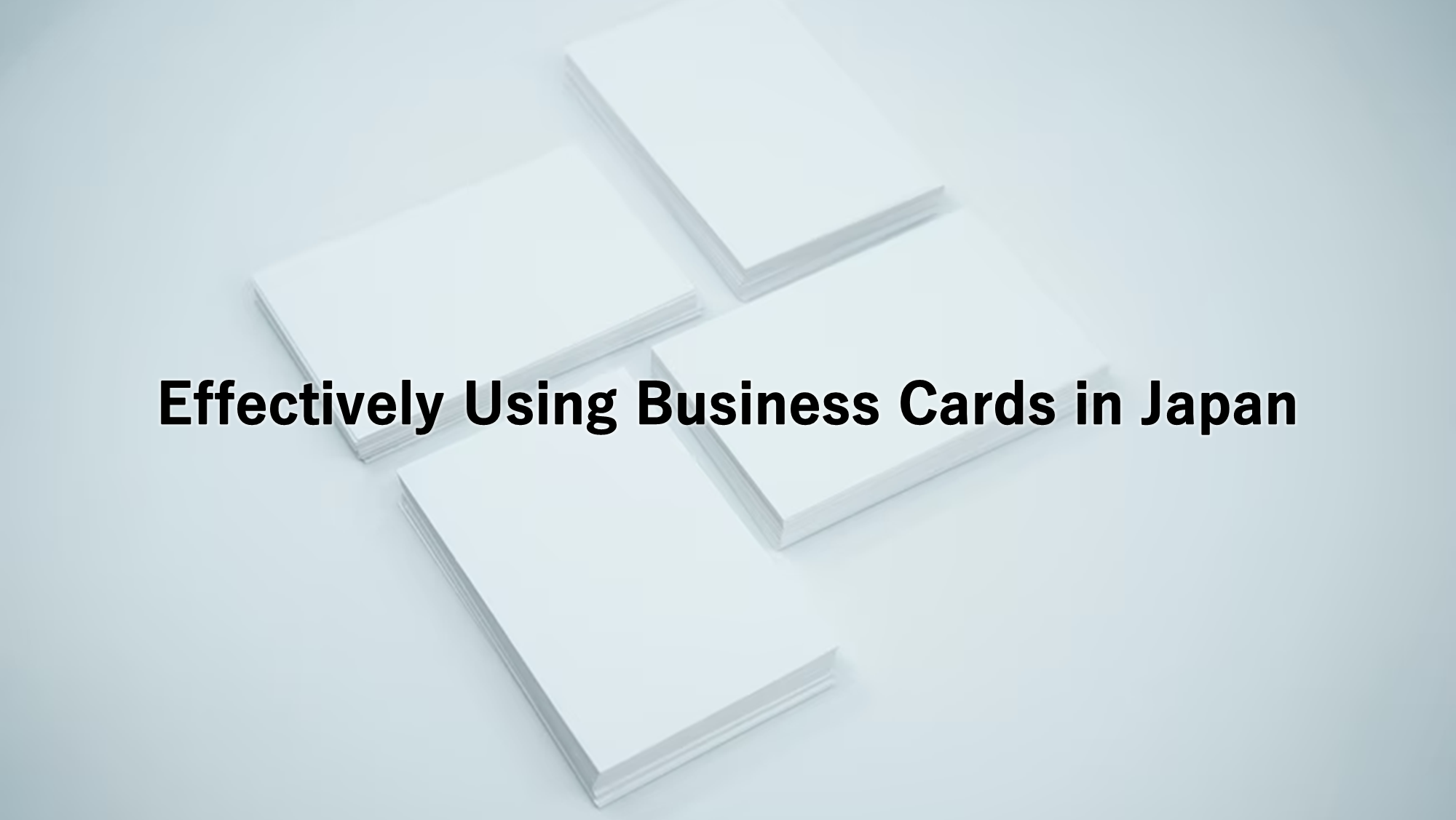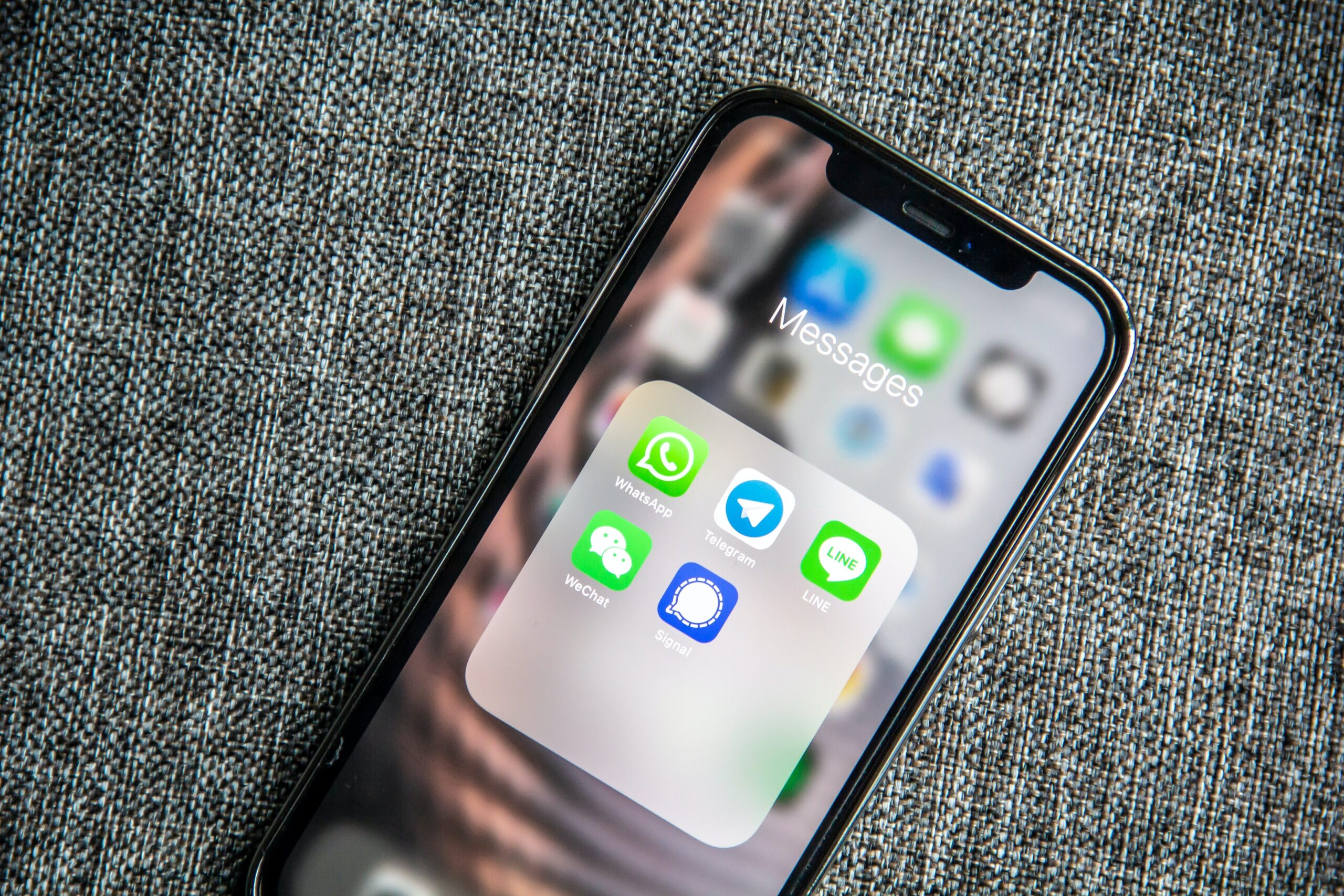The Japanese have business etiquettes unique to Japanese business scenes.
One of them is exchanging business cards.
Oftentimes in Japanese business, businessmen exchange paperboard cards that include information about themselves.
For those of you who are going to work in Japan or will start working at Japanese companies and would like to know
What information business cards should include
The correct way to exchange business cards
this article is for you!
About Japanese business cards
Business cards are paperboard cards that include information (e.g. name, affiliation, contact information) on their owners.
They hold symbolic value to the Japanese and are thought to represent their owners.
In Japanese business scenes, they are exchanged very frequently and there are certain ways to exchange them.
There is no need to worry though.
While it is important to learn business etiquettes, Japanese people understand that it is not common to have business cards in other countries.
However, knowing this will definitely let you gain extra points and a chance to gain the trust of your business partners.
Below, I will introduce what meaning business cards hold, information they should include, and how to effectively use them.
What meaning business cards hold
Business cards are regarded as a representation of their owners.
Therefore, not only their content, but how they look can be important when making a good impression.
Make sure they are stylish as these cards represent you as a professional when you exchange them with your partner.
Information business cards should include
Here are a list of information business cards should include,
- Company logo
- full name of yourself
- name of the company you work for
- the department you’re in
- affliation (your position)
- company website address
- your contacts (Phone number, email address etc.)
If you work for a smaller company and they are important sources for you, you can include your SNS accounts as well.
Some people also include photos of themselves.
If you want your cards to be more universal, you can print out Japanese on one side of the card and English on the other, with the same contents.
How to use business cards effectively
Other than gaining your business partner’s trust, business cards are a good way to keep track of your clients.
You can write information on the client so that you will be able to recognize the person, what they said in the meeting before and when that was.
Exchanging Business Cards
Here are the dos, don’ts, and what ifs of exchanging business cards.

Dos
Step1 Make your cards.
Make your cards so that they are stylish and include all the information you need.
The standard card dimension of is 91 mm × 55mm.
Step2 Put your cards in a card holder.
A card holder is usually like a tiny wallet made of leather and has one pocket.
Put in however many cards you may need to exchange that day.
If you put too many in, the card holder will be bulging so don’t put in too many either.
Keeping your business cards in your wallet or carrying them around without putting them in anything is considered impolite so make sure to get yourself a card holder.
Your card holder should be a simple, basic design, the color being black, brown, or navy blue.
If you are hoping to find one, I suggest looking up ‘business card holder leather’.
Step3 Place your card holder where you can take them out easily.
Place your card holder with your cards in them where you can take them out easily.
Common places for men to keep it would be inside pockets of suit jackets.
For women, it is common to keep it in your bag, in a pocket from where you can take it out easily.
Step4 Present your card.
When someone comes into the room you’re in, swiftly take out your card and hold the card by the upper two corners, in a way that the card is facing the person you’re handing it to.
Introduce yourself as you hand it out.
You should say your full name, the name of the company you work for, and exchange pleasantries.
It is considered more polite to not hand out these cards over tables.
If you are seated in one, you should stand up and move so that there are no tables beneath your hands when you present your card.
If there is more than one person in the room, hand your card out to everyone in the room.
Step5 Accept the other person’s card.
When someone hands you their card, accept it with both hands and say ‘chodai itashimasu’ (頂戴致します.), if you are familiar with the Japanese language.
If not, just politely say thank you.
Step6 Place the card you accepted on the table.
Place the card you received on the table on top of your business card holder.
Step7 Put away the card you accepted when it is time for you to leave.
Keep the card on the table until it is time for you to leave, and only then do you put away the other person’s card.
You should put the card in your card holder.
If your card holder has two pockets, you can use one to put your cards in, and the other one for your clients’.
If you only have one, you can put both of these in that one pocket.
Don’ts
Don’t1 Don’t forget the business cards you accepted.
Be careful to not leave them on the table.
Don’t2 Don’t play with the business cards.
Don’t play with the cards you receive. After you accept the cards and put them on the table, you should not touch these cards until it is time to go, unless there is a reason to touch them.
Don’t3 Covering the company logo when accepting a card.
Be careful to not cover the company logo of your clients with your hands when you receive their cards.
Don’t4 Handing out cards that don’t look brand new.
Make sure your cards do not have any wrinkles, folds, or dirt on them. They should look brand new when you hand them out.
Don’t5 Using the cards you accept as a paper to write notes on at the meeting.
The purpose of these cards is for you to memorize the names of whoever handed them to you. Do not use them as memos during the meeting.
Don’t6 Throw away business cards in the trash as it is.
You have to shred these cards before you throw them out, as they include personal information of a person that they entrusted with you.
What ifs
What if the other person starts introducing themselves before I give them theirs?
If you introduce yourself, and then the other person starts introducing themselves before you can give them your card, wait until they finish.
After they finish, hold out your card so that you can exchange it with theirs.
Hold your card so that it is lower than the person you are handing it to is holding theirs.
They might be holding their card low as well.
The basic idea behind this is to just be polite.
Therefore, as long as your card is no higher than your chest, you should be okay.
Use your right hand to hand out your card and your left hand to accept the other person’s card.
Make sure to hold the other person’s card using both hands as fast as you can.
What if there is more than one business partner? Who should I hand my card to first?
Hand out your card to someone who is in the highest position and work your way down.
During the meeting with your client, you should place the card of the person with the highest position on top of your card holder and you can put away the other cards in your holder.
What if I have someone with me from my company? Who should introduce themself first?
The person with the highest position hands out their card first, followed by those with lower positions.
What if I forget my cards?
Apologize and say that you are out of cards at the moment.
You can introduce yourself without your card and mail your business cards afterwards, if you would like to be extra polite.
Closing
There are a lot of rules to follow when you exchange business cards.
Thank you for respecting our culture and trying to learn it. (The author of this article is Japanese!)
Know that business cards are tools that can make it easier for you to remember clients and for your clients to remember you.
In time, you will have so many business cards that it will be hard to keep track of them all.
There are apps that can help you manage your cards digitally so I suggest you use them.
I sincerely hope that this article helps you with Japanese business cards and negotiate smoothly.
If you would like to know more about Japanese business etiquettes in general, read this article.
References
・”How to Master Business Card Exchange in Japan” Adam Goulston , retrieved 2021/12/4 from here
・”Business Card Etiquette in Japan – How to Exchange Business Cards” , retrieved 2021/12/4 from here
・”あなたは大丈夫?名刺入れの使い方|選び方・しまい方・NGマナー” , retrieved 2021/12/4 from here
・”名刺交換のやり方を徹底解説!受け取り方・渡し方の注意点とは?” , retrieved 2021/12/4 from here
・”内容は正確に!名刺に記載すべき情報とルール” , retrieved 2021/12/4 from here



